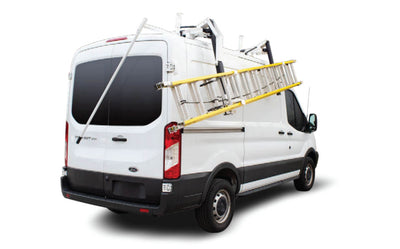
Electric Vehicle Spotlight: Get Ahead by Maximizing Your Payload
For any tradesmen or fleet manager, the main business goal is to use service vans efficiently to store, hold and transport cargo to a job site or delivery address. Therefore, payload is an important factor to consider when purchasing or leasing a van.
What is payload?
Payload refers to the maximum amount of weight a vehicle can carry. A van’s payload capacity is the highest amount of weight it can safely carry for transportation or delivery. Most vehicle certifications include information on maximum payload which is determined by the weight of the van, the cargo the vehicle can carry and the passenger weight. As more and more fleets begin the transition to electric vehicles, it is important to remember that EV vans may have a different payload capacity than traditional combustion engine vans.
Why is it important to maximize payload?
While organizing your van is important, it is also vital to evaluate and maximize your van’s payload capacity, especially for your electric fleet. The biggest reason to calculate and monitor payload capacity is safety. It is dangerous to overload your vehicle with more weight than it is meant to carry. Exceeding this weight can place strain on the van’s suspension and frame, affect braking distances, reduce fuel efficiency or range in the case of EVs, and be disastrous in the event of an accident or collision.
An unloaded electric van typically weighs slightly more than an unloaded combustion engine van due to the weight and presence of the battery packs. Hence, it is imperative to maximize payload for your electric vans. Payload is also directly related to productivity and range.
Maximizing your van’s payload ensures that all your tools, equipment and cargo stay safe and organized, your journeys aren’t sluggish, your fuel or battery efficiency is improved, and your team is following the correct safety laws and procedures. Maximizing the payload also helps maximize the range of EV vans. As a fleet owner, it is in your best interest to be well versed with the payload capacity of your van and maximize it wherever possible.
Tips to maximize payload and improve the range of your EV fleet:
-
Load large items first:
When loading your van, remember that large and bulky items should be loaded first and that the weight should be distributed evenly. Not only does this allow you to effectively visualize the rest of the space you have left, but also ensures that heavy items are evenly dispersed through the van. This will help maximize payload, optimize space in your work van and will also make it easier to lift and store heavier tools on the job. -
Lightweight upfit:
To maximize your van’s payload and space efficiently, conversions made from light weight materials are a great option. A smart way to maximize payload for EV vans is to choose high quality, lightweight options. Shelving, partitions and storage bins built from a lighter material like aluminum instead of steel may help increase your van’s payload without compromising on functionality. High quality aluminum upfit solutions allow for increased payload and optimized range or fuel economy by decreasing the overall van mass. They also help reduce vehicle maintenance and repairs caused by weight overload.
Let us design the right custom upfit for your fleet:
Whether you manage a utility, service, telecom or a delivery fleet, Van Pro gives your van the extra payload it needs to stay competitive.
Van Pro can help you transform your fleet with the right upfit. Get in touch with us today to learn more!


